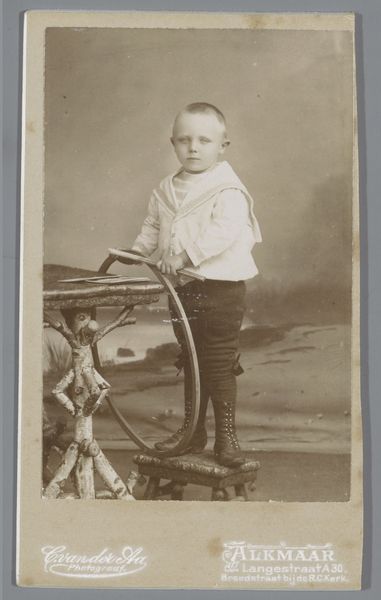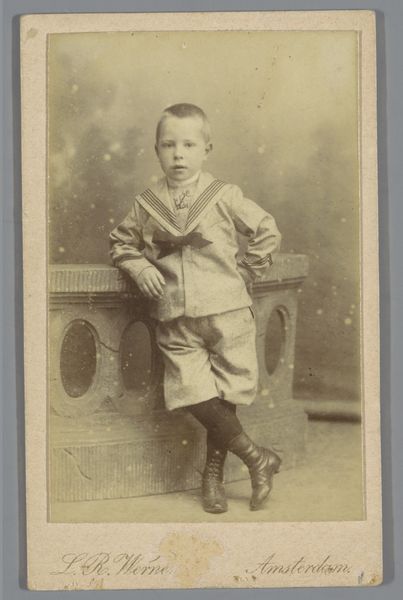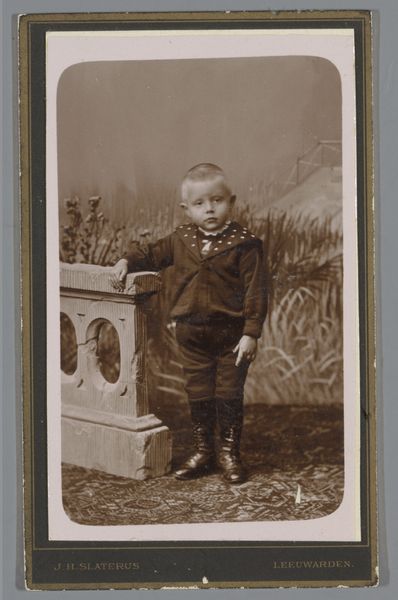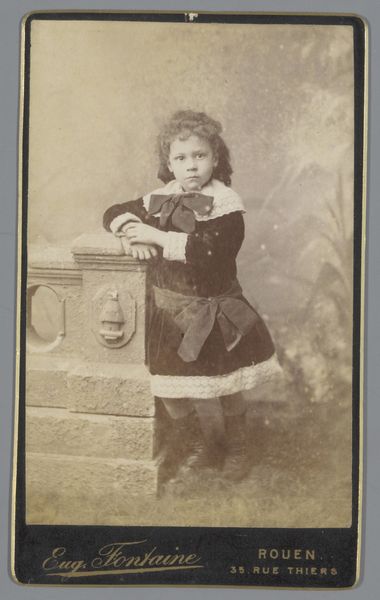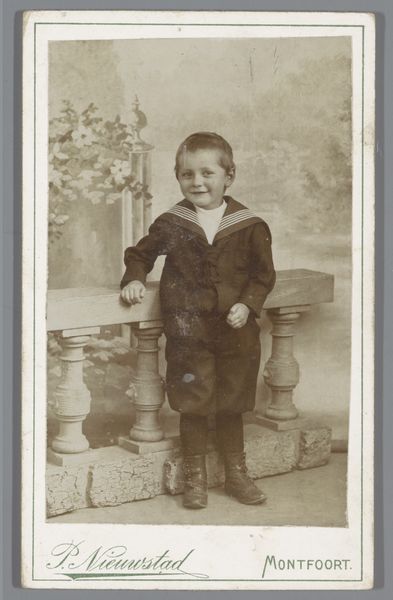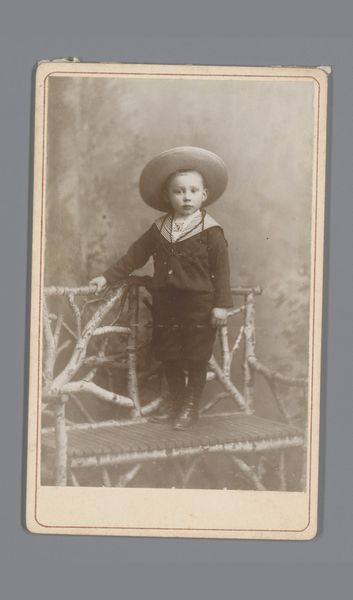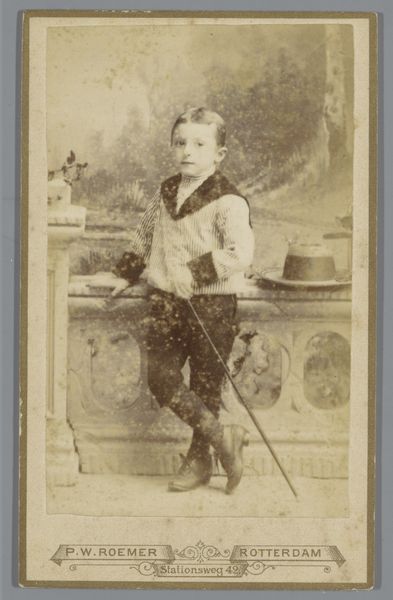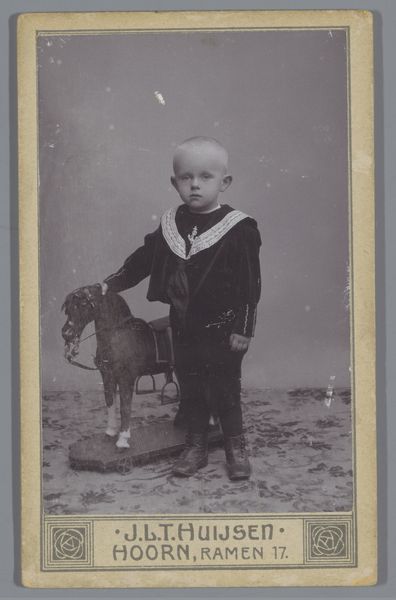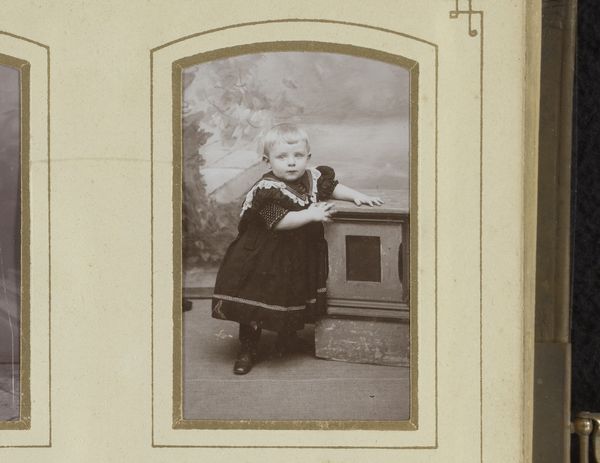
photography, gelatin-silver-print
#
portrait
#
photography
#
coloured pencil
#
gelatin-silver-print
Dimensions: height 243 mm, width 155 mm, depth 10 mm
Copyright: Rijks Museum: Open Domain
Editor: This photograph, "Portret van een onbekende jongen met kruiwagen en schep," or "Portrait of an Unknown Boy with Wheelbarrow and Shovel," dates from around 1902-1908. It’s a gelatin-silver print by E. v.d. Kerkhoff. The boy looks rather serious holding his wheelbarrow and shovel, like he is posing as a miniature laborer. It's striking how staged and perhaps symbolic it is. What can you tell me about this from a historical perspective? Curator: It's fascinating, isn’t it? Consider the rise of photography in the early 20th century and its democratization. Suddenly, portraiture wasn't just for the wealthy elite. This image suggests a burgeoning middle class eager to document their children’s lives, perhaps with aspirations of upward mobility. The wheelbarrow and shovel—are these props suggesting hard work and industry as virtues? Editor: That’s a great point! I hadn’t thought about the performance of social class. The props almost become aspirational objects. Curator: Exactly! Think about the societal forces at play. Child labor was prevalent, yet here, it's romanticized, staged, perhaps alluding to innocence through work, while subtly normalizing these power dynamics. What's your take on the child’s expression within that context? Editor: The child's solemn face adds an intriguing layer of complexity, creating an unusual contrast with the playfulness suggested by the toys. The forced labor could be seen as a symbol for more than just wealth accumulation. It suggests societal integration by promoting ideas like moral fortitude in children through hard work. Curator: Precisely. It is both a formal portrait and a subtle document of its time, revealing how social values were constructed and perpetuated through imagery. Consider how images like these influence how children integrate themselves into society and build their sense of self! Editor: I've definitely learned a great deal. I find myself thinking about the role of photography in constructing ideals, even for children. Thank you for expanding the scope of my comprehension, allowing for social critique using an understanding of labor as a source of moral upbringing, Curator: And I'm struck again by the power of everyday images to unveil hidden aspects of social history. It highlights the performative aspects of class identity, even for young children.
Comments
No comments
Be the first to comment and join the conversation on the ultimate creative platform.


